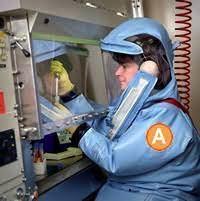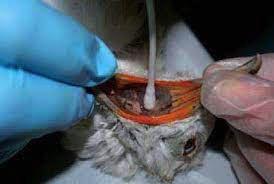 A study was conducted to determine whether a reassortant avian influenza virus created by co-infecting chickens with H7N9 and H9N2 could be potentially pathogenic to humans. H7N9 that emerged in China in 2013 is a generally regarded as a low-pathogenicity strain in chickens although cases of mortality have been described possibly due to a mutation of the H7N9 in circulation. Infrequently H7N9 has been recovered from human cases resulting in severe disease with mortality. Patients usually report a history of direct contact with chickens either on farms or alternatively as vendors or customers in wet markets.
A study was conducted to determine whether a reassortant avian influenza virus created by co-infecting chickens with H7N9 and H9N2 could be potentially pathogenic to humans. H7N9 that emerged in China in 2013 is a generally regarded as a low-pathogenicity strain in chickens although cases of mortality have been described possibly due to a mutation of the H7N9 in circulation. Infrequently H7N9 has been recovered from human cases resulting in severe disease with mortality. Patients usually report a history of direct contact with chickens either on farms or alternatively as vendors or customers in wet markets.
The H9N2 strain is widely distributed in India and Pakistan and is responsible for respiratory disease and mortality depending on intercurrent avian viral infections.
In the trial conducted, chickens were co-infected with H7N9 and H9N2. Genotyping of viruses shed by recipients and contact chickens yielded H9N2 and an H9N9 reassortant. This virus derived a nuclear protein and neuraminidase from H7N9 and the remaining genes from H9N2. The H9N9 virus replicated in human A549 cells with high receptor binding to both Alpha 2, 6 and Alpha 2, 3 sialoglycans compared to H9N2. The reassortant H9N9 was capable of replicating in ferrets infected directly or by contact.
 The study demonstrated the potential of H7N9 low pathogenicity avian influenza to develop reassortants in poultry flocks resulting in a strain with potential zoonotic significance.
The study demonstrated the potential of H7N9 low pathogenicity avian influenza to develop reassortants in poultry flocks resulting in a strain with potential zoonotic significance.
This research could be regarded as a “gain in function” study with obvious public health implications. It is hoped that the work was carried out with due regard to accepted standards of containment and that the reassortant has either been destroyed or placed in secure storage. We do not need a potentially pathogenic avian influenza virus being released from a laboratory leading to a pandemic with recriminations over the origin of a widespread infection.
Bhat, S et al (2021) Co-infection of chickens with H9N2 and H7N9 avian influenza viruses leads to emergence of reassortant H9N9 virus with increased fitness for poultry and a zoonotic potential Journal of Virology doi.org/10.1128/jvi.01856-21.